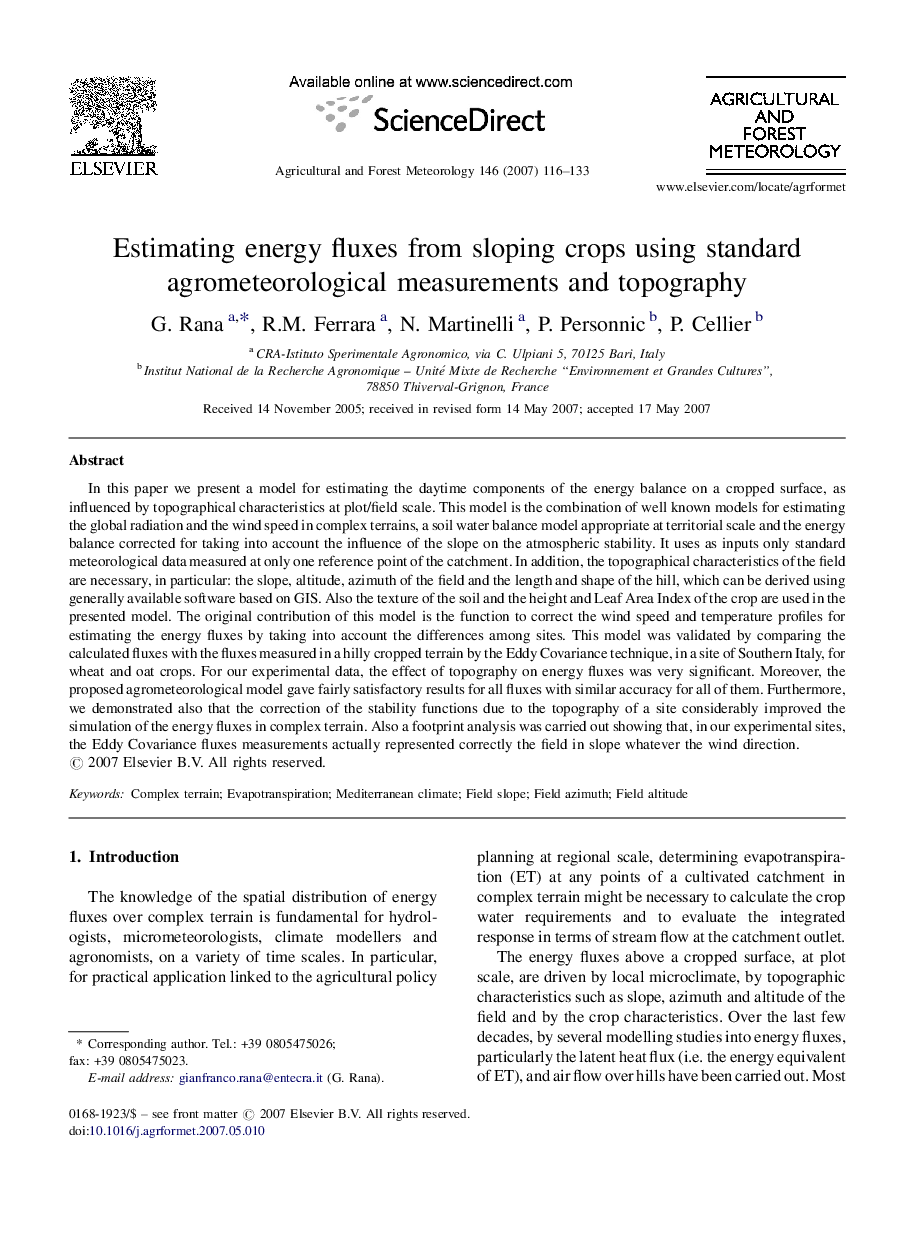| Article ID | Journal | Published Year | Pages | File Type |
|---|---|---|---|---|
| 82886 | Agricultural and Forest Meteorology | 2007 | 18 Pages |
In this paper we present a model for estimating the daytime components of the energy balance on a cropped surface, as influenced by topographical characteristics at plot/field scale. This model is the combination of well known models for estimating the global radiation and the wind speed in complex terrains, a soil water balance model appropriate at territorial scale and the energy balance corrected for taking into account the influence of the slope on the atmospheric stability. It uses as inputs only standard meteorological data measured at only one reference point of the catchment. In addition, the topographical characteristics of the field are necessary, in particular: the slope, altitude, azimuth of the field and the length and shape of the hill, which can be derived using generally available software based on GIS. Also the texture of the soil and the height and Leaf Area Index of the crop are used in the presented model. The original contribution of this model is the function to correct the wind speed and temperature profiles for estimating the energy fluxes by taking into account the differences among sites. This model was validated by comparing the calculated fluxes with the fluxes measured in a hilly cropped terrain by the Eddy Covariance technique, in a site of Southern Italy, for wheat and oat crops. For our experimental data, the effect of topography on energy fluxes was very significant. Moreover, the proposed agrometeorological model gave fairly satisfactory results for all fluxes with similar accuracy for all of them. Furthermore, we demonstrated also that the correction of the stability functions due to the topography of a site considerably improved the simulation of the energy fluxes in complex terrain. Also a footprint analysis was carried out showing that, in our experimental sites, the Eddy Covariance fluxes measurements actually represented correctly the field in slope whatever the wind direction.
